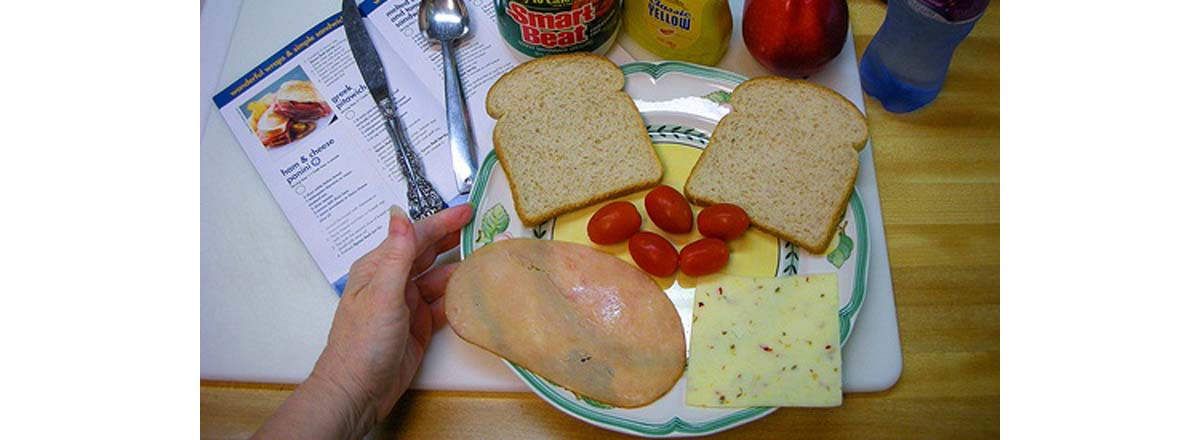Weight loss is never linear – you tend to get a burst where you lose weight quickly, followed by a plateau. But what if you could eliminate these plateaus, and lose weight constantly?
We’ve all been there – you step on the scale for your weekly weigh in, certain that the needle will have moved down from last week, and you’ll hit a new low, only to find that your scale reads exactly the same as before.

Not only is this type of weight loss fail frustrating, it’s also downright infuriating. You feel like you’re doing everything right – your diet is on point, you’re training hard, you are keeping active and avoiding any junk food, yet nothing seems to be working. At his stage, most people hit the nearest candy store for a sugar binge, or decide to give up on dieting for good.
Don't do that just yet, as there are compelling reasons behind these weight loss plateaus.
Weight loss is never completely linear.
You will have weeks when you don’t lose quite as much as you’d hope, and other weeks where your results rival that of a Biggest Loser contestant.
Read more: The Superfood That Boosts Your Weight Loss
Most people who are striving toward a particular goal weight also have weeks where they lose nothing at all, or even put on weight. Wouldn’t it be great if you could eliminate these scenarios for good?
The good news is that you can. All you need to do to keep losing weight consistently is to understand the potential reasons for weight loss plateaus, and what you can do to overcome them, or even avoid them altogether in the first place.
Your Calories Are Too High
When you start a diet, you’ll usually lose weight pretty quickly. This is simply down to your body being in shock at such a drastic change in your lifestyle. If your diet for the last few years consisted of pizzas, burgers, fries, chips, and all the usual junk, just by cutting down the quantity you eat and improving food quality can have quite a drastic impact in a very short space of time. However, after a while, your body gets used to these changes, and you stop losing weight.
Metabolism Changes
Your metabolism rate determines how many calories you burn each day. There is some truth in the idea that some peoples’ metabolisms are slower than others, but you can’t use a slow metabolism as an excuse for being over-weight. In fact, the opposite is true.
If you eat a high number of calories, your metabolism is working over-time to process and digest them which gives you a high metabolic rate. However, when you cut your calorie intake, you also start slowing down your metabolism, because eating food itself leads to burning some calories. If your calorie intake is still the same as when you started dieting, it’s likely your body has gotten used to this new lower intake, and has regulated your metabolism accordingly. You may be taking in the same number of calories, but you’re burning fewer as well. Therefore, your deficit may have been filled to the point where you're now "even", and no longer losing.
If you eat a high number of calories, your metabolism is working over-time to process and digest them which gives you a high metabolic rate. However, when you cut your calorie intake, you also start slowing down your metabolism, because eating food itself leads to burning some calories. If your calorie intake is still the same as when you started dieting, it’s likely your body has gotten used to this new lower intake, and has regulated your metabolism accordingly. You may be taking in the same number of calories, but you’re burning fewer as well. Therefore, your deficit may have been filled to the point where you're now "even", and no longer losing.
Exercise
Do you really put 100 percent into every single training session?
If not, you’re selling yourself short. When you begin a new healthy lifestyle and training plan, it’s easy to be enthusiastic about going to the gym. But after a few weeks, the initial commitment you had, and the pleasant feeling of waking up with aching muscles, and getting a sweat on three or four times a week can start to wane. Even if you still go to the gym, you can find yourself making your workouts easier, leaving sooner, and not giving it your all. It's really no surprise that that dip in motivation also contributes to a dreaded weight loss plateau.
Plateau Busting Tactics
Reduce Your Calorie Intake
Here’s a quick science lesson: The number one most important factor in losing weight is calorie balance. To lose weight, burn fat and get lean, you need to consume fewer calories than you burn. This forces your body to turn to its fat stores for energy, rather than relying on the food you’re eating.

Calorie balance is a delicate issue though. While you want to be in a deficit, eating too few calories can make you feel tired, irritable, lethargic, and actually cause you to burn lean muscle tissue, rather than fat.
Ideally, you should have a deficit of around 500 calories per day for healthy and sustainable weight loss.
This will give you around a pound of pure fat loss every week. Use an Online calorie calculator to work out your calorie needs. It should take into account your age, weight, height, gender and activity levels. You’ll get a figure which is your maintenance calorie intake per day – the amount you’d need to eat to maintain your weight. Subtract 500 from this and you’re good to go.
Read more: 8 Weight Loss Myths Debunked
Get Strict With Your Food
How many times have you grabbed a few chips from a bowl in the kitchen, or eaten a few bits of candy and though “It’s only small, it won’t matter”?
Well, the truth is, it does matter. If you do this a couple of times a day, every day of the week, you can easily add over 1000 calories onto your weekly intake. There are two strategies to deal with this.
Firstly, weigh and measure everything you eat for 2 weeks. This may sound obsessive, but it’s completely necessary, at least for a while. So many people aren’t aware of how much they’re eating, and how many calories they’re consuming. Take this data, and input it into an Online calorie counter. You can then ensure you’re meeting your calorie requirements. After two weeks, you should have a good idea of how to eye-ball portion sizes, so there shouldn’t be any need to measure lean meats and vegetables any more. You should still weigh your portions of high-carb and high-fat foods though – rice, pasta, potatoes, bread, cereals, nuts, oils, and dairy products, etc.
Well, the truth is, it does matter. If you do this a couple of times a day, every day of the week, you can easily add over 1000 calories onto your weekly intake. There are two strategies to deal with this.
Firstly, weigh and measure everything you eat for 2 weeks. This may sound obsessive, but it’s completely necessary, at least for a while. So many people aren’t aware of how much they’re eating, and how many calories they’re consuming. Take this data, and input it into an Online calorie counter. You can then ensure you’re meeting your calorie requirements. After two weeks, you should have a good idea of how to eye-ball portion sizes, so there shouldn’t be any need to measure lean meats and vegetables any more. You should still weigh your portions of high-carb and high-fat foods though – rice, pasta, potatoes, bread, cereals, nuts, oils, and dairy products, etc.
Food Diary
If you eat something, write it in your diary. Not only does this keep you strict and honest about what you eat, it also allows you to go back and assess your intake over a set period of time, and determine where you might be struggling. Be honest. Cheating will only hurt yourself.
Weigh, Measure and Assess
Don’t get too caught up in relying on the scales as a gauge of progress.
Weight yourself no more than once a week – always on the same day, at the same time – preferably first thing in the morning on an empty stomach.
Take progress photos and measure your waist, hips, chest, arms, thighs and calves once a month too. These are extremely useful, as even if the scale doesn’t budge, these should all improve.
Train Harder
Set training goals and challenges every session and aim to beat them. If you train the same, you stay the same, so your workouts always need to be progressing.
If you bench presses 100 lbs for 10 reps last session, aim for 110 lbs, or do 11 reps next workout. Likewise if you ran 3 miles in 30 minutes, shoot for 28 or 29 minutes next time.
If you bench presses 100 lbs for 10 reps last session, aim for 110 lbs, or do 11 reps next workout. Likewise if you ran 3 miles in 30 minutes, shoot for 28 or 29 minutes next time.
Macronutrients
Macronutrients are protein, carbohydrate and fat. While calories are the key to weight loss, macros matter too. Research suggests that higher protein diets, containing a low to moderate amount of carbohydrate and fat result in higher weight loss than low protein, high carb diets. Keep your calorie intake the same, but eat more protein from meat, fish, eggs and dairy products. Cut your grains in favor of vegetables and low sugar fruits, and eat small amounts of fat from peanut butter, nuts, olive oil and avocados.Use these strategies to break through your weight loss plateaus. Implement one at a time, always keeping something in your arsenal should your progress stall again.
- “How To Break Thru Weight Loss Plateaus” Accessed on August 19th, 2012 Retrieved from http://scoobysworkshop.com/2012/06/13/how-to-break-thru-weight-loss-plateau/
- Photo courtesy of sharman on Flickr: www.flickr.com/photos/sharman/10377940
- Photo courtesy of judybaxter on Flickr: www.flickr.com/photos/judybaxter/4422902070

